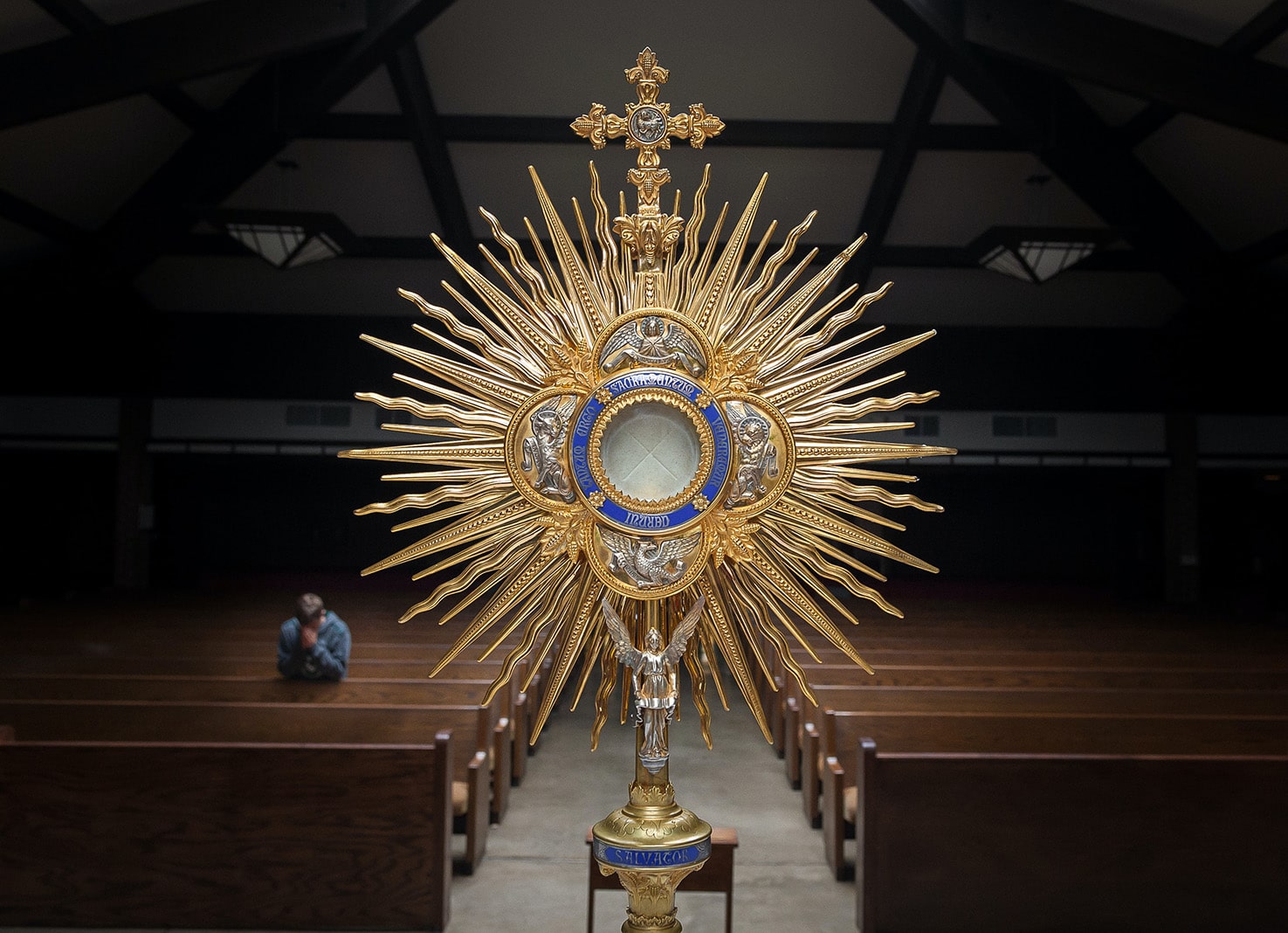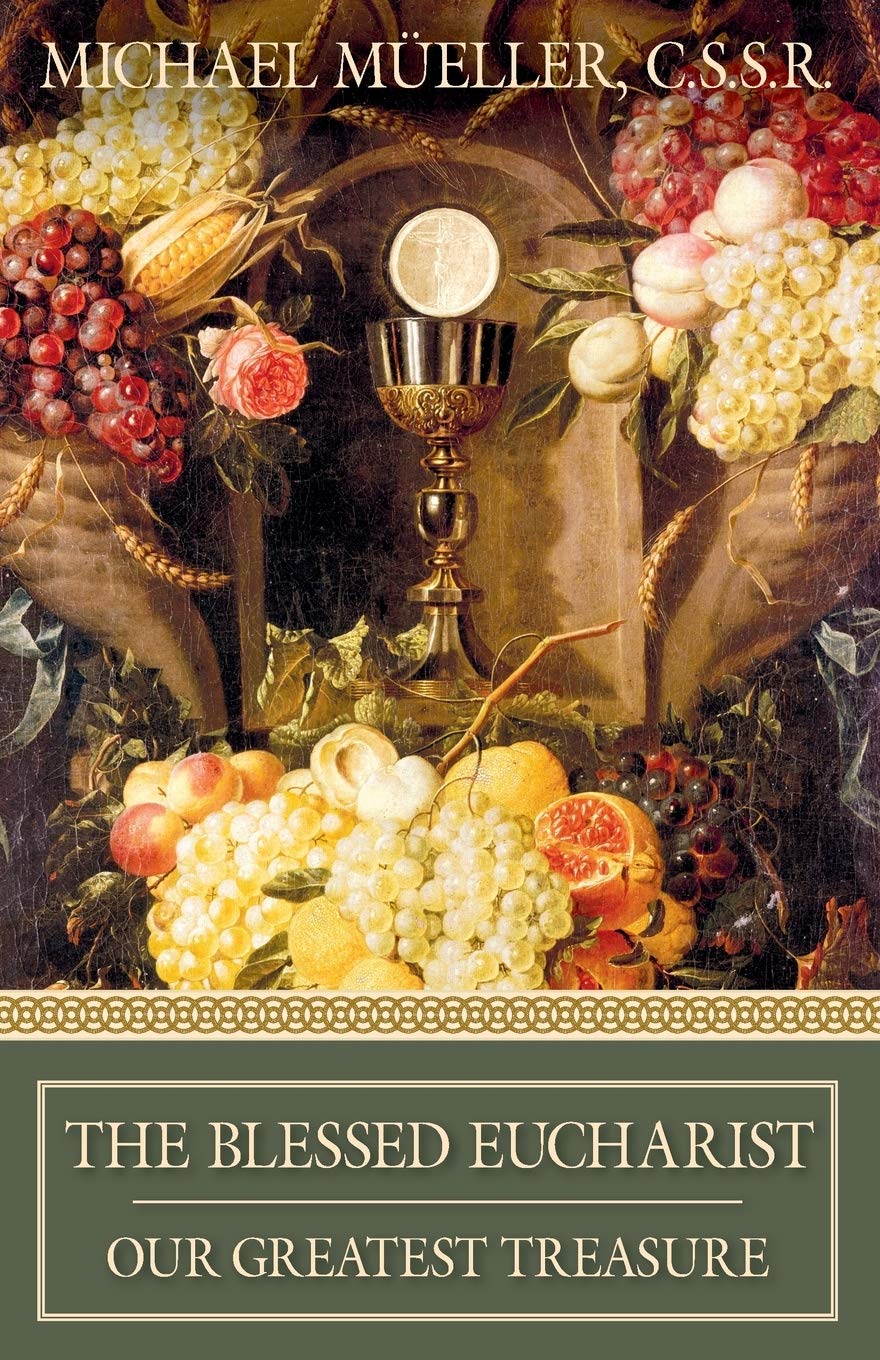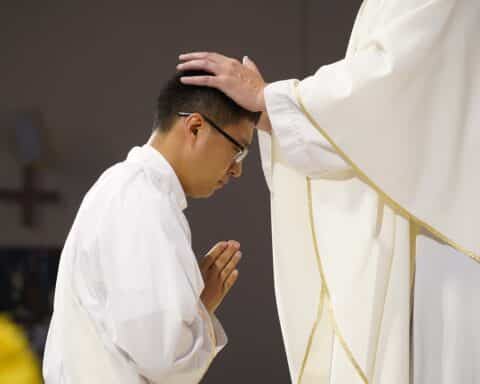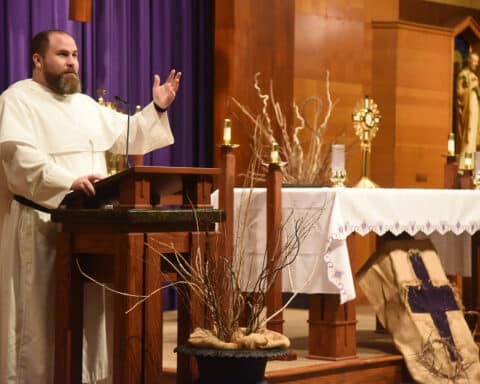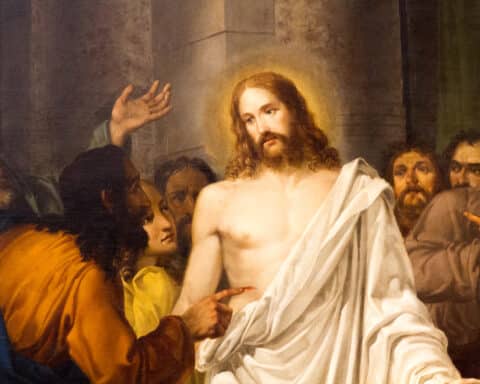The Church is mostly dark save a couple of overhead lights, six candles on the altar and a spotlight that illuminates a gleaming monstrance containing the Blessed Sacrament. The beam from the spotlight casts tall shadows on the wall behind the monstrance; to the left of the shadows is a statue of the Blessed Mother, Our Lady of Grace and to the right, nearby, is St Joseph. These regal figures along with the ever-glowing red lamp ensure the serenity of the scene. A few people are present in the nave, others will come throughout the day as if attracted by some invisible force. Jesus will not be left alone.
Exposition of the Blessed Sacrament began when the celebrant placed the consecrated host in the monstrance and set the monstrance on a stand called a tabor that had been placed on the altar. Then while those present are kneeling, the celebrant incensed the Sacrament and everyone sang, “O Salutaris Hostia” (“O Saving Victim”). After a few minutes, the priest and the servers quietly withdrew.
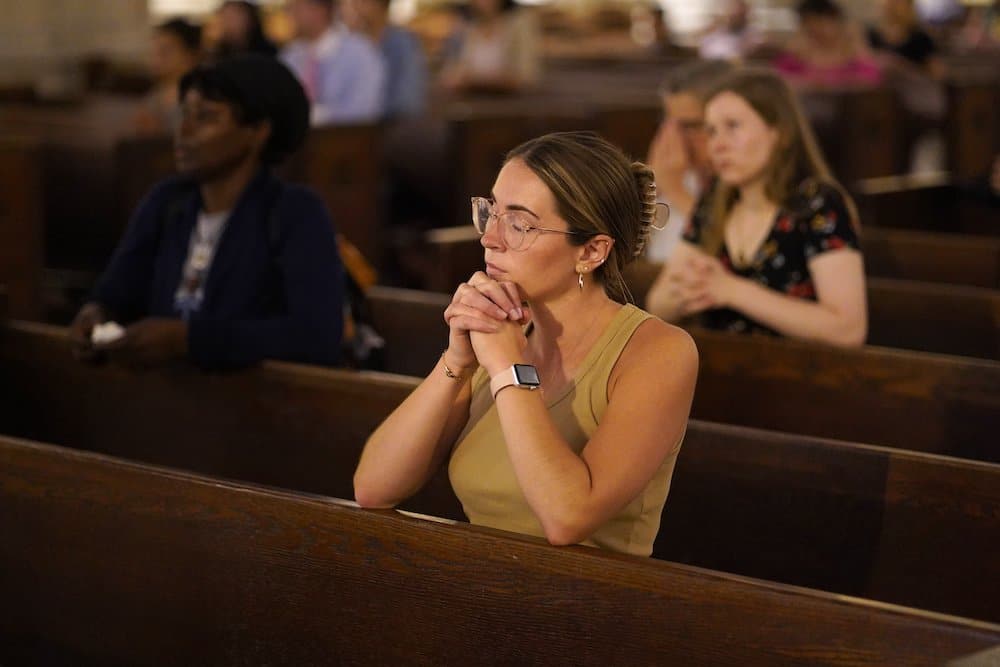
Sacred time
Now there is only sacred silence, no chit-chat, no cell phones, no unnecessary noise. It is akin to the places Jesus went to be alone to spend time with the Father; the saints similarly went to locations away from worldly noise to pray and worship their Creator. God speaks to us in this holy silence; here we kneel, pray and have a conversation with him. In our mind’s eye, we can see the angels and saints surrounding the Blessed Sacrament and glorifying God just as they do in heaven. The Book of Revelation tells us how every creature in heaven and earth cries out in adoration, “To the one who sits on the throne and to the Lamb be blessing and honor, glory and might, forever and ever” (5:13). Attentive to the beautiful surroundings, it is the longing for God and his nearness that consumes us.
A parishioner was once asked what he did in all the time he spent during the exposition of the Blessed Sacrament. He answered that he looks at the Lord and the Lord looks back at him. Indeed, it is our Savior looking at us. It is a time to listen, a difficult trait for many of us, a time we can discard from our minds everything that does not belong to him.
We kneel or sit quietly; some of us are scheduled adorers for a specific time; others of the faithful come and seek the solace of these surroundings during the normal activities of the day. No matter when we come, he waits for us, wants to hear about our lives, our joys, our sorrows. In his presence, we recall how he was insulted, publicly humiliated, suffered for us to save us from eternal damnation. Now we can thank him, tell him we love him, give him thanks for all the graces and blessings he gives us — words of thanksgiving we rarely offer. In his presence, we always genuflect in homage, coming and going, never stand or sit with our back to him and focus this time with our King of kings. Eucharistic adoration is not a spot for stiff-necked people.
| Treasure of the Eucharist |
|---|
|
“I throw myself at the foot of the Tabernacle like a dog at the foot of his master.” — St. John Vianney
|
Devotion building in the Middle Ages
Long ago, Holy Mother Church concluded that the Eucharistic grace(s) from Jesus should not be limited to holy Communion. He is present with us when hidden in the tabernacle and when exposed on the altar. He is here for us to adore. These periods of exposition have been going on since around the 13th century. Initially, the Blessed Sacrament was exposed on a church altar to offer thanksgiving for God’s intervention resulting in military victories; the Sacrament was likewise exposed during times of crisis, including war, famine or widespread illness. People would come before the Sacrament in shifts and pray for God’s divine assistance in whatever the crisis was. This was the forerunner of Forty Hours devotion, perpetual adoration and the other times of exposition in our churches.
Pope Benedict XVI said, “I heartily recommend to the Church’s pastors and to the People of God the practice of Eucharistic adoration, both individually and in community. Great benefit would ensue from a suitable catechesis explaining this act of worship, which enables the faithful to experience the liturgical celebration more fully and fruitfully” (Sacramentum Caritatis “Sacrament of Charity,” No. 67). Indeed, there is great benefit for all when hearing the purpose of Eucharistic adoration. The current Eucharistic Revival in our Church and country serves as motivation for such catechesis.
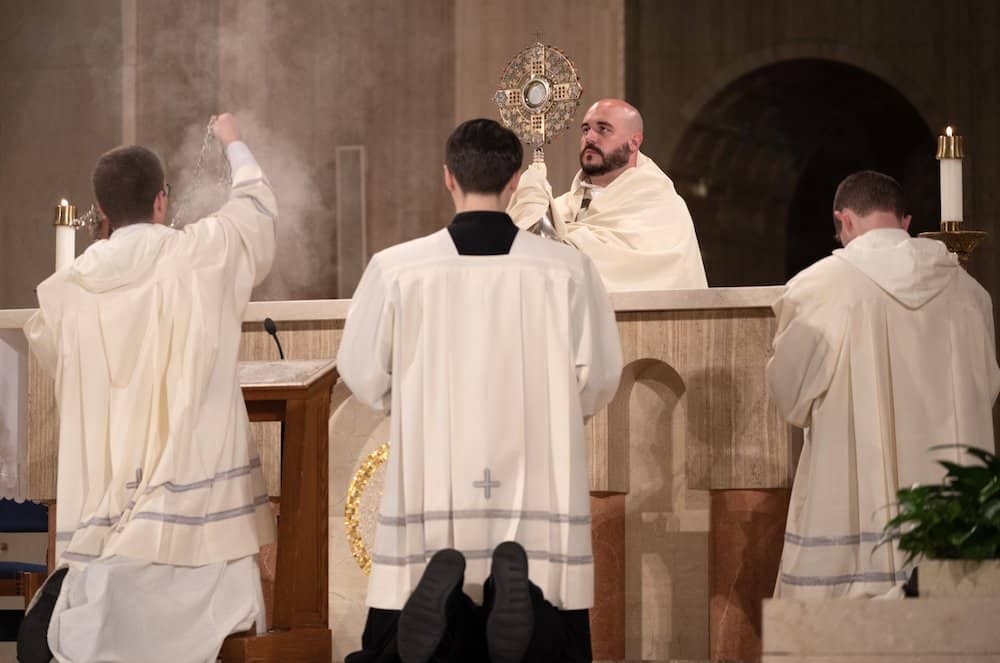
Benediction
Benediction ends the glorious time of the Eucharist being exposed for adoration. Benediction consists of prayers, songs, and reposition of the Sacrament into the tabernacle. The priest or deacon, all present kneel before the Sacrament and sing “Tantum Ergo” as written over 800 years ago by Thomas Aquinas. Strangely, most of us know the Latin version of the song but not the English: “Tantum ergo Sacramentum Veneremur cernui …” (“Down in adoration falling Lo! the sacred Host we hail”). The presider uses incense to praise our Savior while we are singing. Other prayers are said, then the celebrant wearing a humeral veil, goes to the altar and with covered hands, elevates the monstrance and it is Jesus who blesses all in attendance. The significance of the covered hands is to distinguish that it is not the celebrant but Jesus who is giving this blessing. We say the Divine Praises together, offer another prayer and then the celebrant reposes the Blessed Sacrament into the tabernacle. Benediction is finished with the singing of “Holy God, We Praise Thy Name.” We depart with an overwhelming sense of peace.
Ever present
While spending time with Jesus exposed on our altars provides us a special time to worship him, we can also go into any Catholic church when open and adore Our Savior hidden in the tabernacle (dwelling place). He is always present. Canon Law, No. 937 tells us: “Unless there is grave reason to the contrary, the church in which the Most Holy Sacrament is reserved is to be open to the faithful for at least some hours every day so that they can pray before the Most Blessed Sacrament.”
A plenary indulgence can be obtained by spending at least a half hour in adoration before the Blessed Sacrament and completing the other indulgence requirements: confession, penance, holy Communion and prayer for the intentions of the pope.

